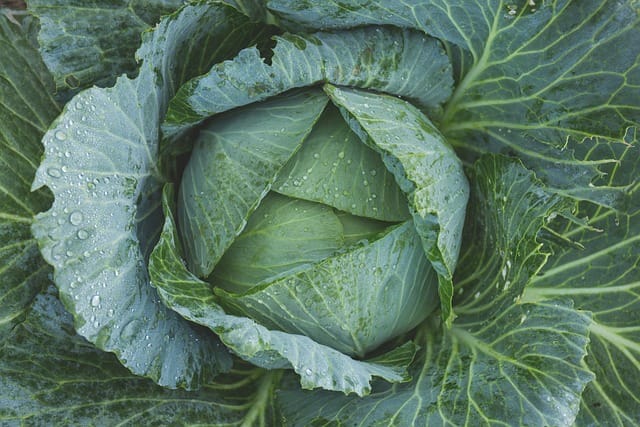How to grow Kale
Kale is a nutritious leafy green vegetable that is packed with vitamins, minerals, and antioxidants

In this article:
- Introduction and Benefits of Growing Kale
- Choosing the Right Kale Variety
- Selecting a Suitable Location for Growing Kale
- Preparing the Soil for Kale Cultivation
- Propagating Kale: Seeds vs. Transplants
- Planting Kale in the Garden
- Proper Watering Techniques for Kale
- Fertilizing and Nutrient Requirements for Kale
- Managing Pests and Diseases in Kale Plants
- Harvesting and Storing Kale
- Common Mistakes to Avoid in Kale Cultivation
- Delicious Kale Recipes to Try
- Frequently Asked Questions about Growing Kale
- Conclusion and Final Tips for Successful Kale Gardening
Introduction and Benefits of Growing Kale
Kale is a nutritious leafy green vegetable that is packed with vitamins, minerals, and antioxidants. It is a cool-season crop that is relatively easy to grow, making it a great choice for home vegetable gardens. In this article, we will guide you through the process of growing kale, from choosing the right variety to harvesting and storing your crop.
Choosing the Right Kale Variety
There are several different varieties of kale to choose from, each with its own unique characteristics. Some popular choices include Curly Kale, Lacinato Kale, and Red Russian Kale. Consider factors such as taste preferences, climate, and intended use (cooking, salads, etc.) when selecting a kale variety for your garden.
Selecting a Suitable Location for Growing Kale
Kale thrives in full sun but can tolerate partial shade. Choose a location in your garden that receives at least 6 hours of direct sunlight daily. Additionally, make sure the soil is well-draining to avoid waterlogged roots.
Preparing the Soil for Kale Cultivation
Before planting kale, it is important to prepare the soil properly. Kale prefers a fertile soil that is rich in organic matter. Improve your soil by adding compost or well-rotted manure, as this will help retain moisture and provide essential nutrients. Remove any weeds or debris from the area and loosen the soil using a garden fork or tiller.
Propagating Kale: Seeds vs. Transplants
Kale can be grown from seeds or transplants. Starting kale from seeds gives you a wider variety selection, but transplants offer a head start in the growing process. If you choose to grow kale from seeds, start them indoors 6-8 weeks before the last frost date. For transplants, purchase healthy seedlings from a reputable nursery.
Planting Kale in the Garden
Plant kale outdoors once the soil temperature reaches around 50°F (10°C). Space the plants around 12-18 inches apart, allowing enough room for proper growth. Dig holes slightly larger than the rootball of the transplants or sow seeds at a depth of ¼ inch. Water the plants thoroughly after planting to promote root establishment.
Proper Watering Techniques for Kale
Kale plants require consistent moisture to thrive, especially during hot and dry periods. Water the plants deeply at least once a week, providing around 1 inch of water. Avoid overwatering, as kale does not tolerate soggy soil. Mulching around the plants can help retain moisture and reduce weed growth.
Fertilizing and Nutrient Requirements for Kale
Kale is a heavy feeder and requires regular fertilization to ensure healthy growth. Prior to planting, incorporate a balanced fertilizer into the soil. Apply a nitrogen-rich fertilizer every 4-6 weeks during the growing season. Additionally, consider conducting a soil test to determine any nutrient deficiencies and adjust fertilizer application accordingly.
Managing Pests and Diseases in Kale Plants
Kale is generally pest-resistant, but it can attract some common garden pests such as aphids, cabbage worms, and flea beetles. Regularly inspect your plants for any signs of infestation and take appropriate measures, such as applying organic insecticides or removing pests by hand. Proper crop rotation and good sanitation practices can also help prevent disease outbreaks in your kale garden.
Harvesting and Storing Kale
Kale leaves can be harvested when they reach their desired size. Start by picking the outer leaves first, allowing the inner leaves to continue growing. Use a sharp knife or scissors to cut the leaves off the stem. Store harvested kale in the refrigerator, preferably in a plastic bag or airtight container, to maintain freshness.
Common Mistakes to Avoid in Kale Cultivation
While kale is relatively easy to grow, there are some common mistakes that beginners make. Avoid overwatering, neglecting proper spacing, and forgetting to fertilize regularly. Additionally, keep an eye out for signs of pests or diseases and take proactive measures to address them.
Delicious Kale Recipes to Try
Kale is a versatile vegetable that can be used in a variety of delicious recipes. Some popular options include kale chips, kale smoothies, kale salads, and sautéed kale with garlic. Experiment with different cooking methods and flavors to discover your favorite kale dishes.
Frequently Asked Questions about Growing Kale
Q: How long does it take kale to grow from seed?
A: Kale usually takes around 55-75 days to mature from seed, depending on the variety and growing conditions.
Q: Can I grow kale in containers?
A: Yes, kale can be grown in containers as long as they are large enough to accommodate the plants and have proper drainage.
Q: Does kale need to be washed before eating?
A: Yes, it is recommended to wash kale thoroughly before consumption to remove any dirt or debris.
Conclusion and Final Tips for Successful Kale Gardening
Growing kale can be a rewarding experience, allowing you to enjoy nutritious greens straight from your garden. Remember to choose the right kale variety, provide adequate care with proper watering and fertilization, and be mindful of potential pests and diseases. With these tips and a little patience, you can successfully grow kale and experience the joy of harvesting and cooking with this versatile vegetable!
